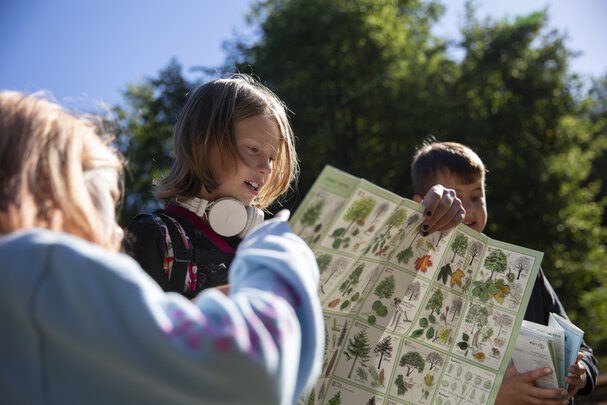
Credit: Maja Hitij/Getty Images
What I learned writing a science paper for a 10-year-old
“It’s amazing how much you can learn from the children reviewers.”
27 April 2021

Maja Hitij/Getty Images
Academic articles in science are criticized for being impenetrable to the average adult reader, let alone child. The journal Frontiers for Young Minds (FYM) was launched in 2013 to help bridge that gap.
Instead of the usual professional scientists, FYM’s peer reviewers are all children aged eight to 15 years old.
The children work with scientist mentors to provide feedback to authors on the clarity and accessibility of their research and the scientific concepts involved. According to its website, FYM has more than 3,200 children reviewers and 550 science mentors consisting primarily of graduate students and postdocs.
Eileen Buchman was eight years old when she reviewed the paper, “Measuring distances to galaxies” in 2019. The paper was written by Jonathan Davis, an observational astronomer at the University of Utah and the Smithsonian Astrophysical Observatory in Arizona.
Buchman says she accepted the invitation to review the article because she was curious about stars and the Universe, and called it “very, very educational”. She liked that was reaching out to “little ones” like her to encourage them to learn about astronomy.
During the review process, Buchman also found that the content in the manuscript was too advanced and the presentation style was too dry to engage children her age, and recommended changes to the paper.
Career benefits
Michael Hout, an associate professor in the Psychology Department at New Mexico State University in Las Cruces, who has published multiple articles with FYM, says that although his papers with FYM may not be seen as relevant to his prospects for tenure or grants, he sees great value in them in improving how he teaches and presents.
“I have learnt not to assume prior knowledge in my students and to really consider the audience when I am presenting at more general conferences,” says Hout.
Hout is so convinced of the benefits that he has assigned writing assignments for his students to communicate their work to young children, and offered to help them publish their articles.
“At least two-thirds of my students, including undergraduate students, were co-authors on our papers in FYM,” says Hout.
“The journal is also open access and does not charge authors for publishing, which makes it even better for science outreach. When students publish in FYM, it also enhances their CV for a career in science communication, outreach and editing.”
He adds that publishing in FYM is a great opportunity to give children access to research concepts in cognitive psychology that are not typically taught in schools.
Mehmet Orman, an assistant professor of chemical and biomolecular engineering at the University of Houston in Texas, says that writing for the journal has improved his ability to explain science to his students, including high-school interns, in plain language.
“When new members join my lab, I email them a copy of our article at FYM,” says Orman. “I have received a positive response from my students that this ‘orientation document’ prepared them well to understand more complex concepts in our research on cancer persistence.”
Recently, Orman included his FYM article as evidence of science outreach in the ‘educational aim’ section of his National Science Foundation CAREER award proposal.
“The reviewers love that I was trying to get more young people interested in STEM, and I think it definitely played a role in me getting the grant,” he says.
How to engage children reviewers
Hout says that although the word limit for papers is only 1,500, authors should not assume that it is easy to write a good FYM paper or that their paper won’t be rejected because it is not clear enough for young readers.
Hout says it’s helpful to keep an open mind to learning. “Do not be afraid [of the possibility] that you may have to re-write your drafts multiple times. Embrace the new learning experience and let the children help guide your paper.”
“It’s amazing how much you can learn from the children reviewers,” says Hout.
“I have been asked how my research findings can be applied to other scientific fields and situations which I have not considered. Children reviewers have also provided helpful comments, such as [suggestions] to include definitions of advanced words and to change the way I write the impact statement. The kids really taught me how to write a paper that is interesting enough to sustain my readers’ attention.”
Orman also advises that potential authors try to understand the thought processes of children.
“I had an unusual question, [which was] whether I would be willing to sacrifice myself to find a cure for cancer,” says Orman. After clarifying, he realized that the intention of the child reviewer was to know, “why my research is so important to me and what impact I hope to make with my science. It’s really a thought-provoking question from a 10-year-old”, says Orman.
In 2014, FYM was named as one of the Great Websites for Kids by the American Library Association. In 2019, it won the Society for Neuroscience’s Award for Education in Neuroscience.
